Product images on Amazon are one of the most important things to consider when creating a listing. This is the first impression a buyer gets of your product. Images with a high-quality that help the client know exactly what they’re getting can be a decisive factor.
Product images on Amazon have to comply with Amazon’s product image requirements as well.
As you might already know, you need to comply with Amazon’s terms if you want your listing to be successful.
In this post, we’ll give you an overview of Amazon’s Product Image Requirements along with some tips to help you stand out.
Dos & Don’ts | Product Images on Amazon

Amazon is pretty clear on how they want images to be uploaded, so as long as you read their guidelines carefully, it should be easy to get your product images right.
- Images should represent the product accurately. Show only the product that is for sale.
- Make all the features of the product clearly visible.
- MAIN images must have a pure white background (RGB color values of 255, 255, 255).
- MAIN images must be professional photographs of the product. This means no graphics, illustrations, mockups, or placeholders. Do not add accessories that are not sold with the product to avoid any confusion with your buyers. Avoid any use of text, logos, watermarks, or inset images.
- Make sure your images match the product title.
- Your images can be in JPEG (.jpg), TIFF (.tif) or GIF (.gif) file formats, but JPEG is preferred.
- Animated .gifs are not supported on Amazon.
- Amazon doesn’t allow nudity or sexually suggestive images.
- If you’re selling shoes, the MAIN images must show only a single shoe, facing left at a 45-degree angle.
- The MAIN images for women and men’s clothing should include a model.
- All Kids & Baby Clothing images should not have a model posing.
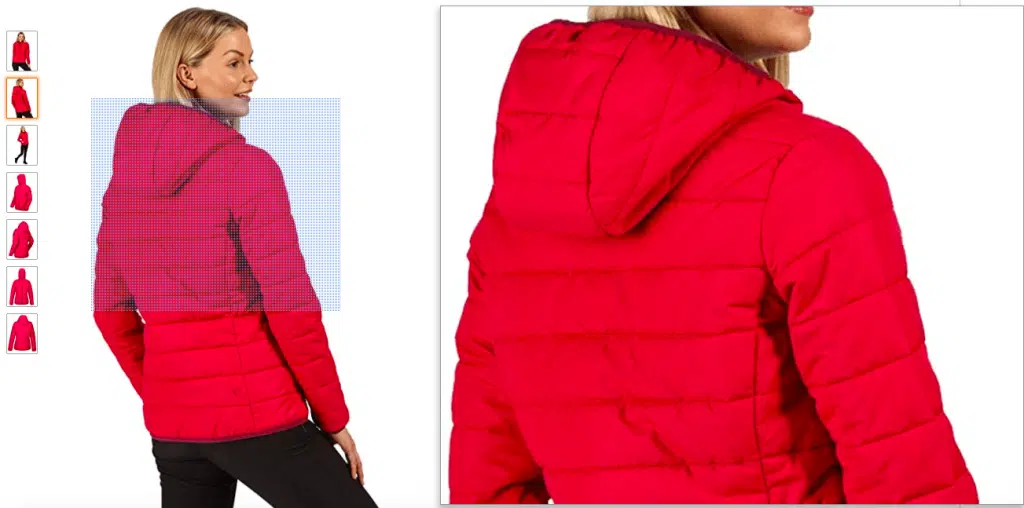
Technical Image File Requirements
Here are a few more technical guidelines you should know to upload your product images on Amazon:
- Color should be RGB or CMYK, although it is better to use RGB, because CMYK color sometimes may show tonal variations when displayed on Amazon’s website).
- The image resolution should be at least 72 dpi.
- The longest side of the image should have a minimum of 1,600 pixels so the zoom function can be enabled. This minimum size requirement enables the zoom function on the website. Zoom has been proven to enhance sales.
- The maximum size on the longest side of an image is 10,000 pixels.
If you use an editing software, it’s likely you’ll find a function that indicates and lets you change the pixel dimensions.
Another way to check the pixel dimensions is displaying the image in a browser, right-clicking and viewing the image properties.
About Your Main Product Image on Amazon
In the previous section, you can see a couple of bullet points about the main image. This is the first photo your customers will see when they view your listing on Amazon’s page.
Besides following the requirements above, it is extremely important for your image to be appealing to potential buyers. The main image should be good enough to attract a customer’s attention and they can go to your listing.
Your main image on a specific product should be on a white background, without accessories, text, logos or watermarks.
So basically, your product should be the star without any other distraction.
What to AVOID
Besides the guidelines mentioned above, it is also important to know what not to do for your Main Image.
Here are some examples:
- Avoid using any type of Amazon logos or trademarks, including variations and modifications or anything that could be confused with Amazon’s logos and trademarks.
- Avoid using badges, or anything similar to them, used on Amazon on your product images. This means, nothing in the image should look like the following badges: “Amazon’s Choice,” “Premium Choice,” “Amazon Alexa,” “Works with Amazon Alexa,” “Best Seller,” or “Top Seller”.

- Nudity or sexually suggestive images are strictly forbidden.
- Your product images should not be blurry, pixelated, or have jagged edges.
- Your product should occupy at least 85% of the frame on the limiting dimension of the longest side.
It is true that you might come across images that do not completely comply with the criteria, but don’t be tempted to break Amazon’s rules.
Remember that Amazon’s guidelines are there to help your listings be seen, plus you don’t want your listings to be suspended. You can be more playful with your other images!
You can upload up to 9 images to your Amazon listings. Only the first 7 images will be shown on your actual live listing, but that’s more than enough range to show off the features of your product.
Best Practices for Your Amazon Product Images
Here’s a list of tips to have the best image photos out there. It is recommendable to outsource your product images, unless you’re a professional photographer and/or have access to high-quality camera equipment.
1. Your main image IS KEY.
Give your images the importance they deserve. Customers tend to click on images that are bright, clear, and bold. You can look at your competitors’ main images and just make yours better. It’s smart to hire a professional photographer for the main image and a few additional snaps of your product at different angles.
2. Don’t limit yourself!
Amazon lets you use several images so you can have a good range to show all of your products’ benefits and features, so take advantage of that. A good combination to upload is 6 images and one video.
It’s also a good idea to add eye-catching graphics and text (but NOT to the main image, to the additional ones only!) to keep customers interested and informed about your product.
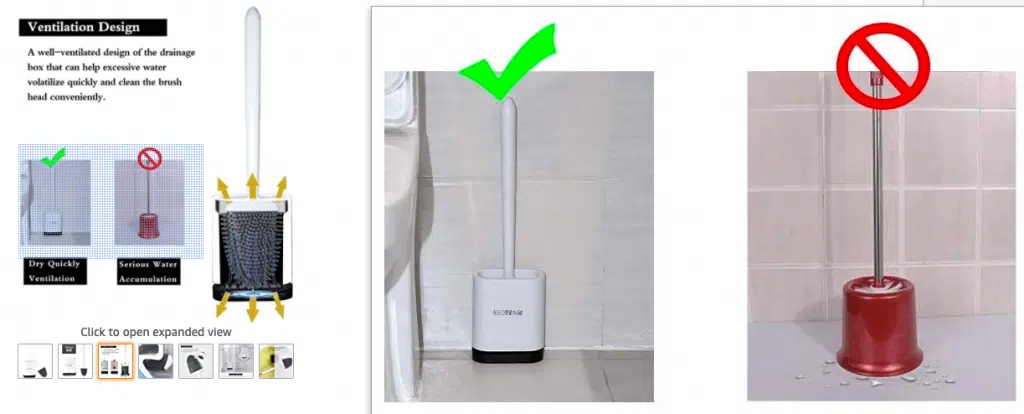
Also, infographics, informative text, and comparisons or size charts provide important information.
Don’t forget to:
- Show your product from multiple angles.
- Use models so the customers can have an idea of how the product would look or how it works.
- Show an indoor or outdoor setting where your product is shown in use. For example, if you’re selling cooking utensils, show someone in a kitchen using them.
- Increase visual interest by mixing up backgrounds in your additional images.
- Add infographics if possible.
3. Show your product in a real situation.
A lifestyle image showcases the product being used as you intend it. It could be as easy as taking some pics with your friends or family, or even by yourself, using the product. It’s not necessary to use a professional camera, in these cases, sometimes your phone is enough.
If snapping those pictures is difficult, then you can always turn to photoshop and show people using your product. However, it is important to have them professionally photoshopped, because you don’t want your customers to be hesitant about trusting your product, which can happen if the images look sketchy.
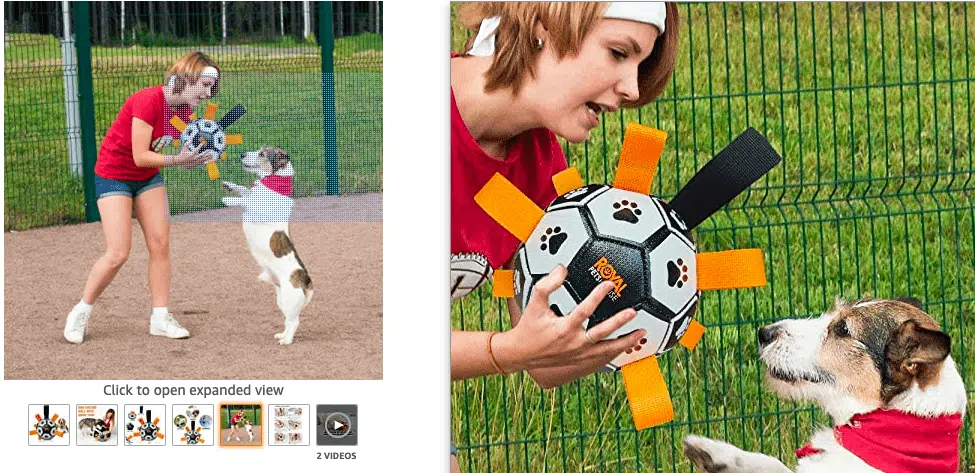
4. Don’t create false expectations.
It’s important to include the most important features/benefits of your product. Don’t forget to mention sizing, dimensions, or other important specifications, as well as the materials used.
When selling food or nutritional supplements, include the ingredients.
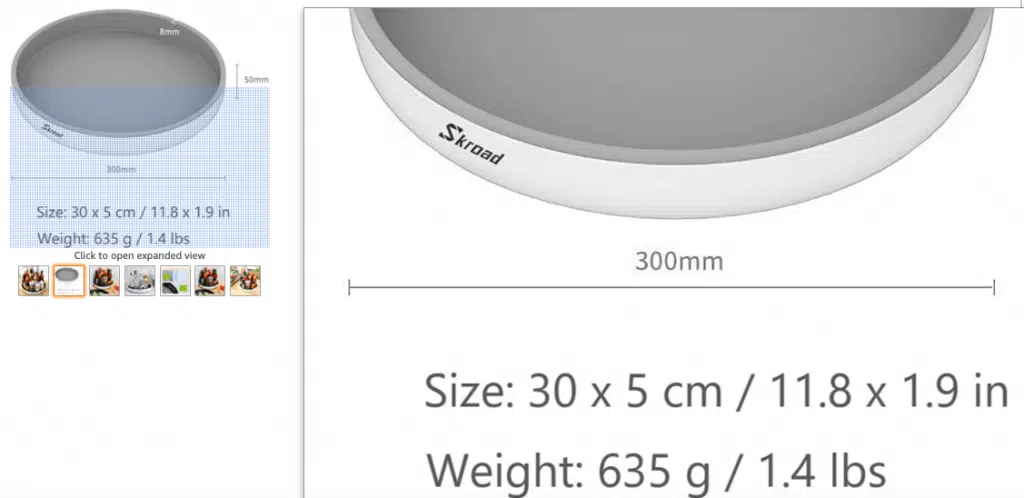
5. Time to zoom in!
Remember your customers are not able to touch or view your product, so it’s important to show them every possible angle of your product.
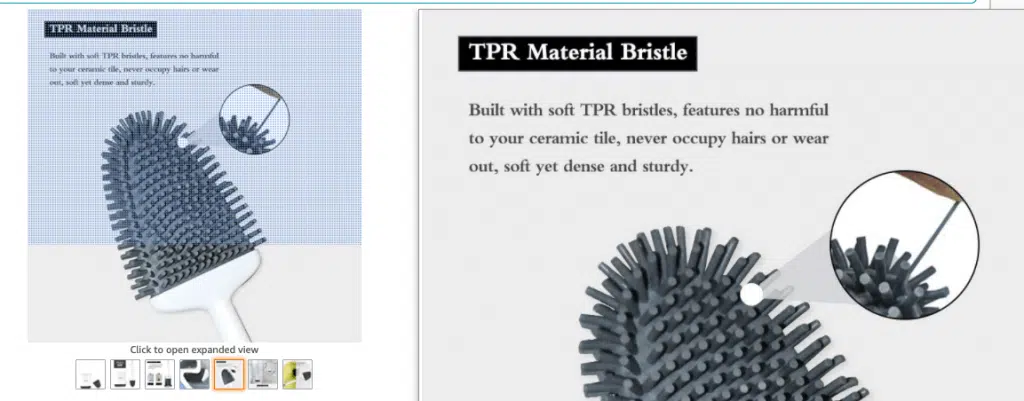
It is also important to highlight details that your customers should know.
For example, if it has a weight limit, a warranty, or if it’s adjustable. This way, possible buyers can get a better idea of the quality and design of the product. It could also be the thing that tips them to purchase from you instead of the competition.
6. Is your product easy to use?
If your product requires assembly or installation, try to demonstrate the process using pictures.
Your customers will be confident they can put the product together and won’t be confused when receiving pieces they can’t put together.
You can avoid returns this way.
What if my product image is not compliant?
If your product images on Amazon don’t comply with the guidelines, your listing will be removed from search until you fix them.
Here’s what you can do:
- Go to the Fix Your Products report to view products removed from search because of issues with the images.
- Go to the Image Upload Status Report to view failures in the technical file requirements.
- View the topics listed in Image Troubleshooting to learn more about image requirements.
- Self-service imaging products and photography videos are useful if you’re creating your own images.
Sources: Amazon Seller Central and Jungle Scout
In Conclusion
As you can see, uploading product images on Amazon can make or break your business. The good thing is that their guidelines are pretty straightforward and following them will surely lead you to success.
One way to go about is putting yourself in your customers’ shoes. Check out what your top competitors are doing in terms of the quality of their product images to engage their audience, and keep in mind that hiring experts in the field will save you unnecessary headaches.



